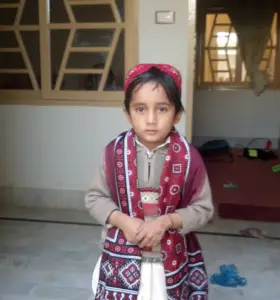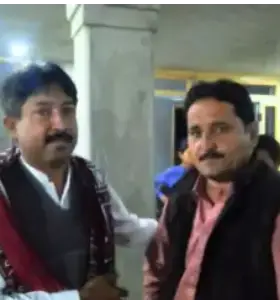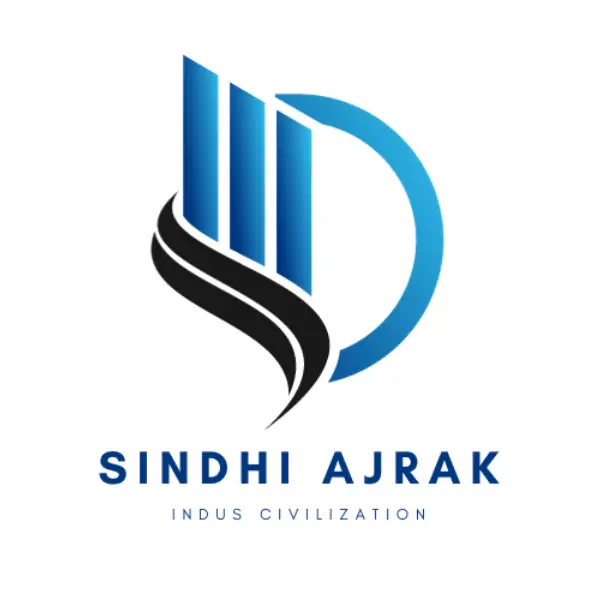Ajrak is a shawl like the Rich Cultural Heritage of Sindh
Ajrak is a traditional textile art form that originated in the Sindh region, especially in Hala Sindh, Pakistan. It is a block-printed fabric shawl-like clothing that features intricate geometric patterns and vibrant colors such as indigo, red, and white.
Buy handmade crafts online
Affordable Featured Ajrak
The process of making or manufacturing involves several stages of washing, dyeing, printing, and drying, which are all done by hand. This sort of manmade masterpiece is made of fabric and it holds great cultural significance for the Sindhi people, who often wear ajrak as a symbol of their identity. It is also used to decorate homes and for special occasions such as weddings and festivals.
It is widely used in many Sindhi dresses, and clothing items, including kurtas, shirts, scarves, even prints in facemasks are also popular in Sindh.. In addition, this is also used as a quilt and a cover for the bed.
The cultural significance of Ajrak is such that it is often given as a gift or gesture of hospitality to guests during special events, such as weddings and other celebrations. This beautiful fabric is a testament to the rich cultural heritage of Pakistan and is highly valued both locally and internationally.
Ajrak along with Sindhi topi are celebrated as enduring symbols of the Valley of Mehran, representing its rich history and tradition. They have been integral to Sindhi identity for centuries, embodying the resilience of the Sindhi people who have faced challenges throughout history in preserving their culture and heritage.
Beyond their aesthetic appeal, these signify the enduring spirit of the Sindhi people. From the ancient city of Moen Jo Daro to the modern era, Sindhi culture has been shaped by its diverse influences and continues to be a source of pride for the people of Sindh.
HOW TO USE AJRAK SHAWL AS A GIFT OR TO SHOW UNITY ON EKTA DAY



Ajrak and its importance in Sindhi Culture
Sindhi culture holds immense importance as it is one of the oldest surviving cultures in the world. Its history dates back to the ancient civilization of Mehran Valley, with Moen Jo Daro being one of the most significant archeological sites in the region.
The ruins of Moen Jo Daro provide a glimpse into the sophisticated urban planning, art, and craft of the ancient Sindhi civilization. It is believed that the people of Moen Jo Daro were skilled in metallurgy, agriculture, and trade. The city was also home to a complex social hierarchy, with evidence of religious and cultural practices still visible today.
The legacy of Moen Jo Daro and other historical sites in Sindh continue to inspire and inform the cultural practices of the Sindhi people. Ajrak along Topi, for example, are both cultural artifacts that have been passed down through generations of Sindhi families. The intricate designs and patterns on ajrak are believed to be inspired by the ancient art and craft of the region.
Through celebrations like Ekta Day, the Sindhi people continue to promote their cultural heritage worldwide. The day serves as a reminder of the richness and diversity of Sindhi culture, while also providing an opportunity for people to learn more about the traditions and history of the region.
By preserving their cultural identity, the Sindhi people ensure that the legacy of Moen Jo Daro and other ancient sites continue to inspire future generations.
Ajrak the main Sindhi Culture Element



It’s a unique textile Sindhi cultural product that is an integral part of the Sindhi culture and heritage. It is a handcrafted block-printed fabric that is made using natural dyes, usually in deep shades of indigo and madder. It’s known for its intricate designs and patterns, which include geometric shapes, stars, and floral motifs.
One of the most versatile aspects of this masterpiece of artisan skill is its usage. It is used in various ways in Sindhi culture. For instance, it is a popular garment worn by both men and women in the region. Men use it as a turban, while women use it as a dupatta or a chador. The fabric is also used to make traditional clothing like kurtas, salwars, and sarees, facemasks.
Apart from clothing,its also used as a decorative item in homes. It is used to cover cushions and tablecloths and even used as wall hangings. The vibrant colors and intricate designs of it add a unique touch of elegance and beauty to any living space.
Furthermore, its also used in other products like bags, wallets, and even footwear. It is a popular choice for gifts and souvenirs as well. Many people also use it as a symbol of cultural pride and identity, especially when attending cultural events and festivals.
It is a versatile textile product that is deeply ingrained in Sindhi culture and heritage. Its usage extends beyond clothing, and it is used in various forms, making it an integral part of everyday life in the region. This masterpiece of artisan skill is worn along with Sindhi topi, and some Sindhi put on patko with this masterpiece of Sindhi culture.
Topi is a traditional cap worn mostly along ajrak by men in the Sindhi culture of Pakistan and India. It is made from a variety of materials, including cotton, silk, and wool, and is known for its unique design and vibrant colors. Topi has been an integral part of Sindhi culture for centuries, and it holds great cultural and historical significance.
The design of the topi is unique and a separate masterpiece of Sindhi Culture, with a flat crown and a slightly rounded brim. It is typically decorated with intricate embroidery and mirror work, which adds to its beauty and cultural value. The colors used in the embroidery are usually bright and bold, with red, green, blue, and yellow being some of the most common colors.
Topi is worn by men of all ages, and it is often paired with traditional clothing like the Shalwar Kameez.It is commonly worn during cultural events and festivals, weddings, and other formal occasions. It is also worn as a daily accessory, especially by older men who prefer traditional clothing.
Apart from its cultural significance, topi also has practical uses. It is used as a cap and provides shade from the sun and protection from the cold, making it a useful accessory in different weather conditions. It is also lightweight and easy to carry, making it a popular choice for travelers and tourists


